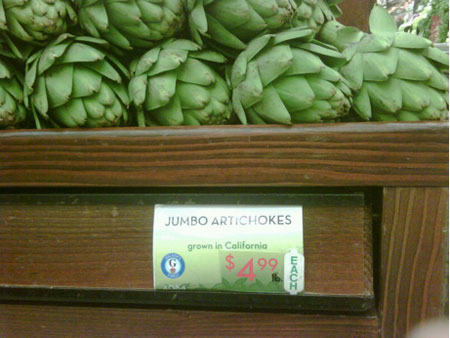 Is there some sort of cheap plastic switch nestled deep inside my brain that gets reset each time the season's change? I swear my friends, I become some automated eating robot that's completely incapable of making my own choices when it comes to food. Take Autumn. It wasn't some gradual ease into the season at my house but a very! drastic! change! of! the! seasons! I began snubbing the grill and light summer veggies almost immediately in favor of the tastes that currently rule my existence: caramelly, sticky, roasted, savory, smoky, braisey, deep and dark. And you know what? I couldn't be happier.
Is there some sort of cheap plastic switch nestled deep inside my brain that gets reset each time the season's change? I swear my friends, I become some automated eating robot that's completely incapable of making my own choices when it comes to food. Take Autumn. It wasn't some gradual ease into the season at my house but a very! drastic! change! of! the! seasons! I began snubbing the grill and light summer veggies almost immediately in favor of the tastes that currently rule my existence: caramelly, sticky, roasted, savory, smoky, braisey, deep and dark. And you know what? I couldn't be happier.
When I think about it, it may be my body's way of overcompensating for the fact that where I live we don't really have seasons at all. I mean, other than Santa Ana Winds Season, Awards Season, TV Sweeps Season, Summer's-Almost-Here-Get-To-The-Tanning-Bed-And-A-Little-Extra-Restylane-While-We're-At-It-Season. You see what I'm sayin', right?

 Salads don't always have to contain green lettuces, like basic iceberg or bibb, other colors, textures, and flavors can make an interesting combination. I love bitter lettuces, such as purple radicchio and white endive. Add pungent cheese, sweet and juicy pears, and crunchy walnuts to the mix, dress it in a Dijon-maple vinaigrette, and it becomes a festive fall salad that can be enjoyed as an elegant appetizer. Roasting the pears with a drizzle of maple syrup creates another level of flavor and intensifies their sweetness. I use Seckel pears, which are a small and quite firm variety of pear. They work extremely well when cooked and don't lose their texture at all, making them ideal in this salad.
Salads don't always have to contain green lettuces, like basic iceberg or bibb, other colors, textures, and flavors can make an interesting combination. I love bitter lettuces, such as purple radicchio and white endive. Add pungent cheese, sweet and juicy pears, and crunchy walnuts to the mix, dress it in a Dijon-maple vinaigrette, and it becomes a festive fall salad that can be enjoyed as an elegant appetizer. Roasting the pears with a drizzle of maple syrup creates another level of flavor and intensifies their sweetness. I use Seckel pears, which are a small and quite firm variety of pear. They work extremely well when cooked and don't lose their texture at all, making them ideal in this salad.
 This is, without a doubt, going on my Thanksgiving table. What is it about Gruyere cheese that is so dang good? I love its assertiveness on the palate.
This is, without a doubt, going on my Thanksgiving table. What is it about Gruyere cheese that is so dang good? I love its assertiveness on the palate. In the blink of an eye, summer disappeared. It seems like the 4th of July was just yesterday when we wore short sleeve shirts and shorts, had a picnic in the park, and watched fireworks explode overhead.
In the blink of an eye, summer disappeared. It seems like the 4th of July was just yesterday when we wore short sleeve shirts and shorts, had a picnic in the park, and watched fireworks explode overhead.
